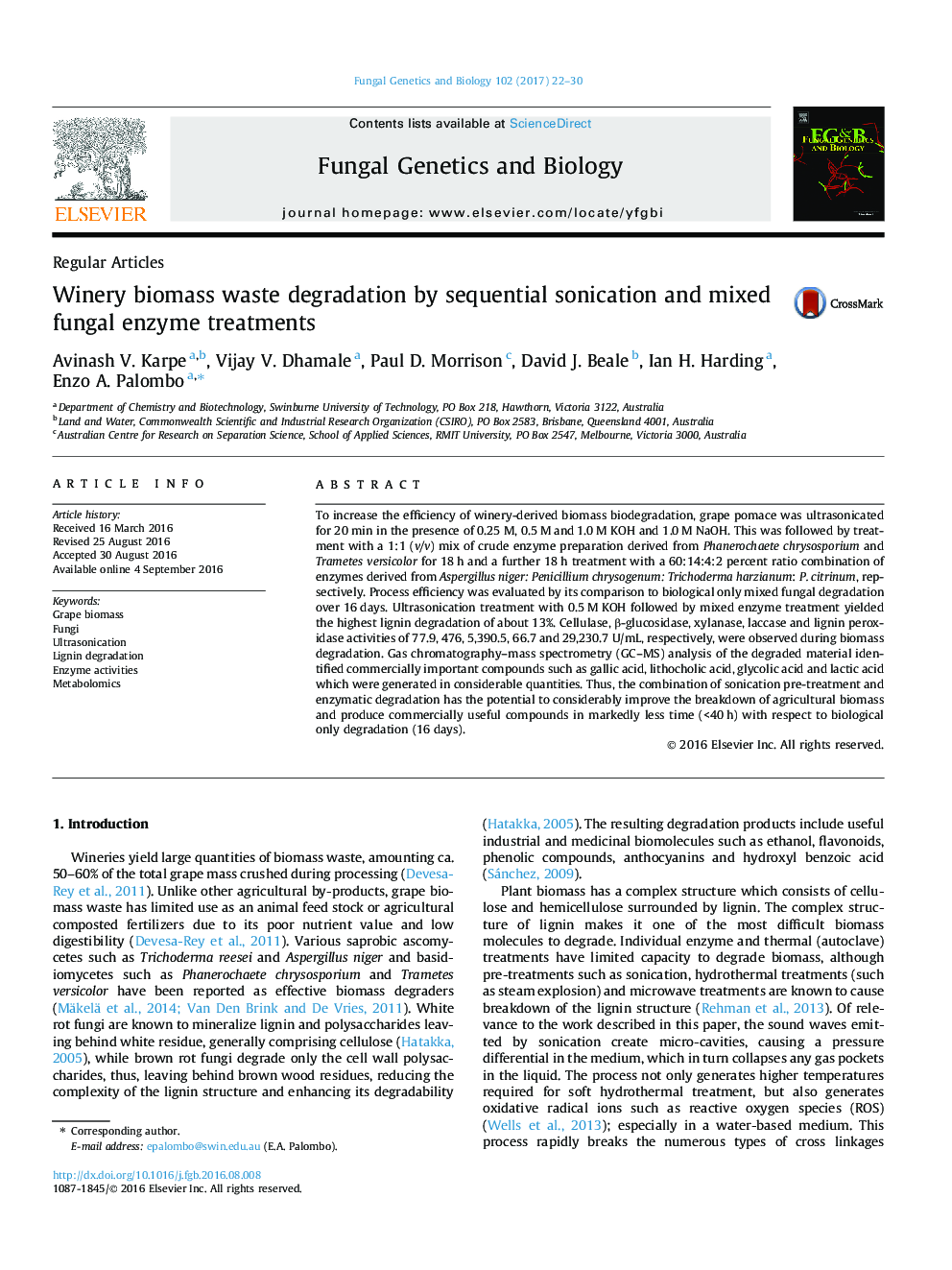| کد مقاله | کد نشریه | سال انتشار | مقاله انگلیسی | نسخه تمام متن |
|---|---|---|---|---|
| 5532774 | 1549989 | 2017 | 9 صفحه PDF | دانلود رایگان |

- Effective lignin mineralization (13%) by 20Â min ultrasonication pre-treatment.
- Sequential mixed enzyme fermentation displayed significant enzyme activities.
- Substantial degradation achieved in 48Â h.
- Commercially important metabolites including gallic and glycolic acids.
To increase the efficiency of winery-derived biomass biodegradation, grape pomace was ultrasonicated for 20 min in the presence of 0.25 M, 0.5 M and 1.0 M KOH and 1.0 M NaOH. This was followed by treatment with a 1:1 (v/v) mix of crude enzyme preparation derived from Phanerochaete chrysosporium and Trametes versicolor for 18 h and a further 18 h treatment with a 60:14:4:2 percent ratio combination of enzymes derived from Aspergillus niger: Penicillium chrysogenum: Trichoderma harzianum: P. citrinum, repsectively. Process efficiency was evaluated by its comparison to biological only mixed fungal degradation over 16 days. Ultrasonication treatment with 0.5 M KOH followed by mixed enzyme treatment yielded the highest lignin degradation of about 13%. Cellulase, β-glucosidase, xylanase, laccase and lignin peroxidase activities of 77.9, 476, 5,390.5, 66.7 and 29,230.7 U/mL, respectively, were observed during biomass degradation. Gas chromatography-mass spectrometry (GC-MS) analysis of the degraded material identified commercially important compounds such as gallic acid, lithocholic acid, glycolic acid and lactic acid which were generated in considerable quantities. Thus, the combination of sonication pre-treatment and enzymatic degradation has the potential to considerably improve the breakdown of agricultural biomass and produce commercially useful compounds in markedly less time (<40 h) with respect to biological only degradation (16 days).
Journal: Fungal Genetics and Biology - Volume 102, May 2017, Pages 22-30